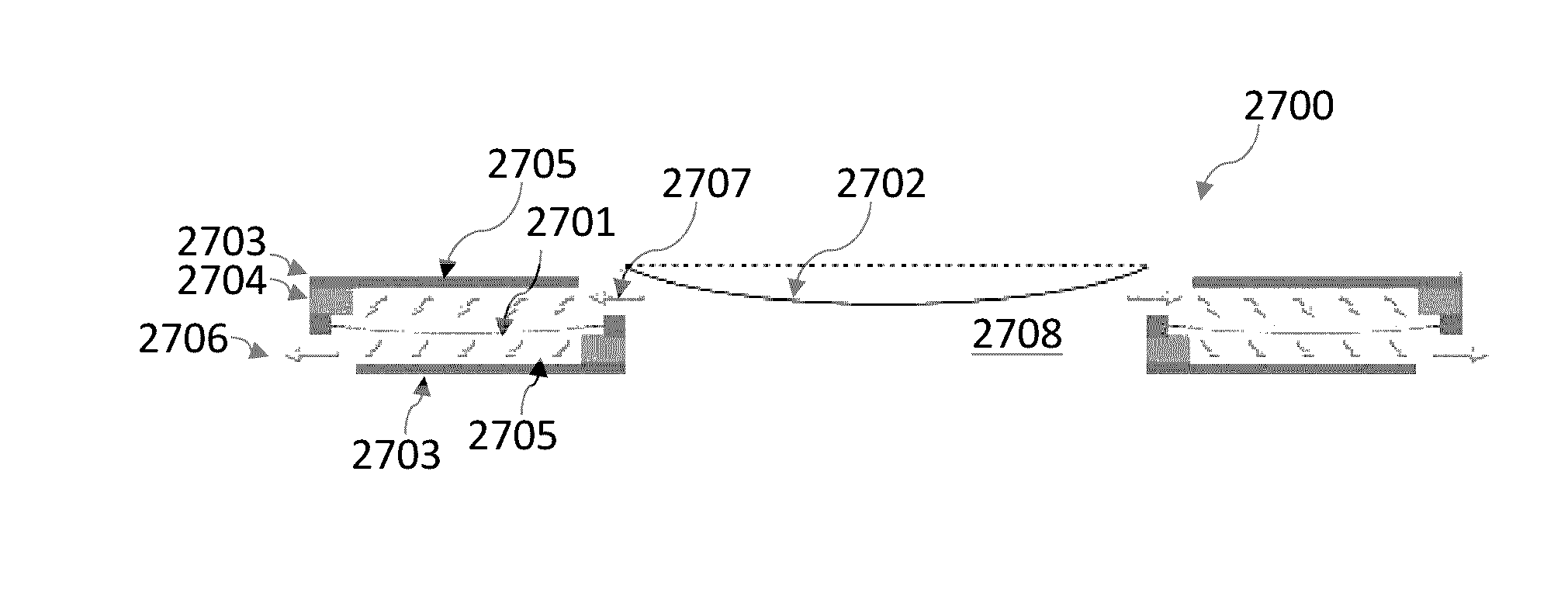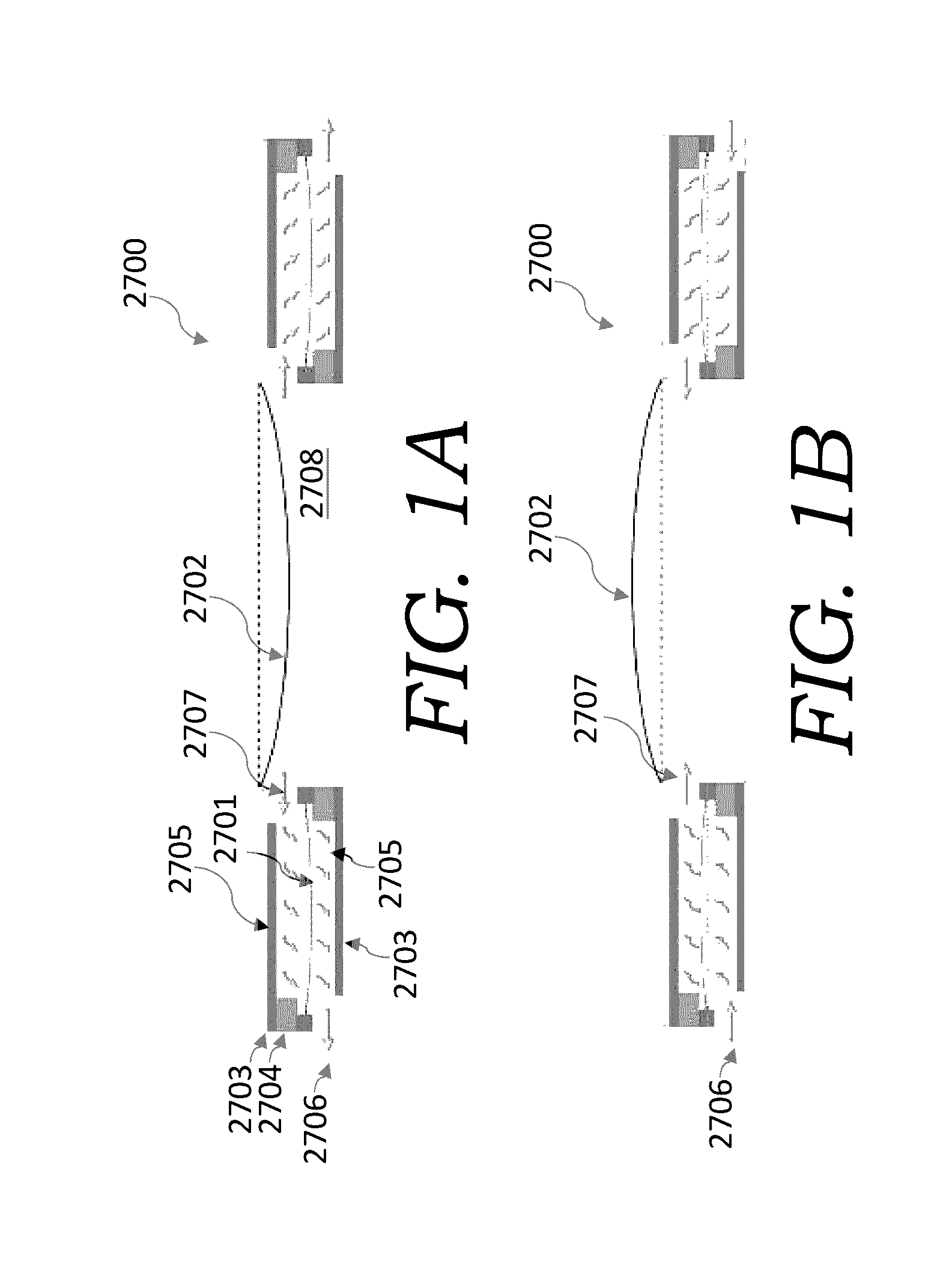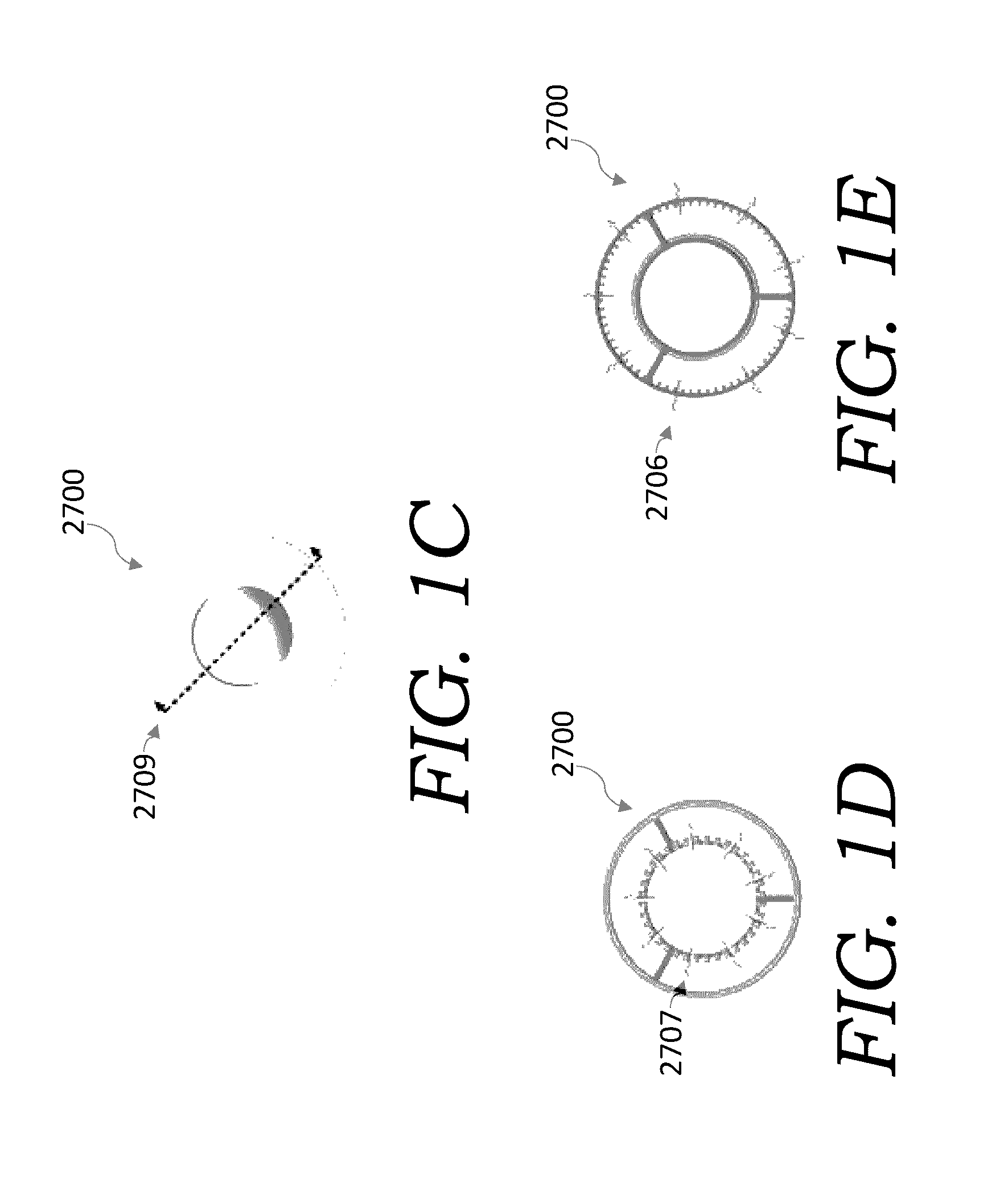Compact electroacoustic transducer and loudspeaker system and method of use thereof
a technology of electroacoustic transducers and loudspeakers, applied in the field of loudspeakers, can solve the problems of affecting the sound quality of speakers,
- Summary
- Abstract
- Description
- Claims
- Application Information
AI Technical Summary
Benefits of technology
Problems solved by technology
Method used
Image
Examples
Embodiment Construction
[0087]As set forth in the Pinkerton '615 application, it has been discovered that a loudspeaker having pump cards can generate good sound without the need for a rubber / PDMS membrane and that the use of a rubber / PDMS membrane can be avoided. It has further been discovered that using pump / driver cards to move air to / from the back of the device to the front (or front and side) of the device yields much less of a pressure drop than directing airflow toward a central chamber. By doing so, the pump cards are more efficient at low audio frequencies (20 Hz to 150 Hz) than higher frequencies (150 Hz to 20 kHz); accordingly, the embodiment of the present invention implements conventional electro-dynamic cone drivers above about 150 Hz. This was surprising as this exactly the opposite of what is taught in the art and sold commercially, which teaches that all electrostatic speakers using electro-dynamic cone drivers use them to handle low frequencies and electrostatic drivers to handle mid to h...
PUM
 Login to View More
Login to View More Abstract
Description
Claims
Application Information
 Login to View More
Login to View More - R&D
- Intellectual Property
- Life Sciences
- Materials
- Tech Scout
- Unparalleled Data Quality
- Higher Quality Content
- 60% Fewer Hallucinations
Browse by: Latest US Patents, China's latest patents, Technical Efficacy Thesaurus, Application Domain, Technology Topic, Popular Technical Reports.
© 2025 PatSnap. All rights reserved.Legal|Privacy policy|Modern Slavery Act Transparency Statement|Sitemap|About US| Contact US: help@patsnap.com



